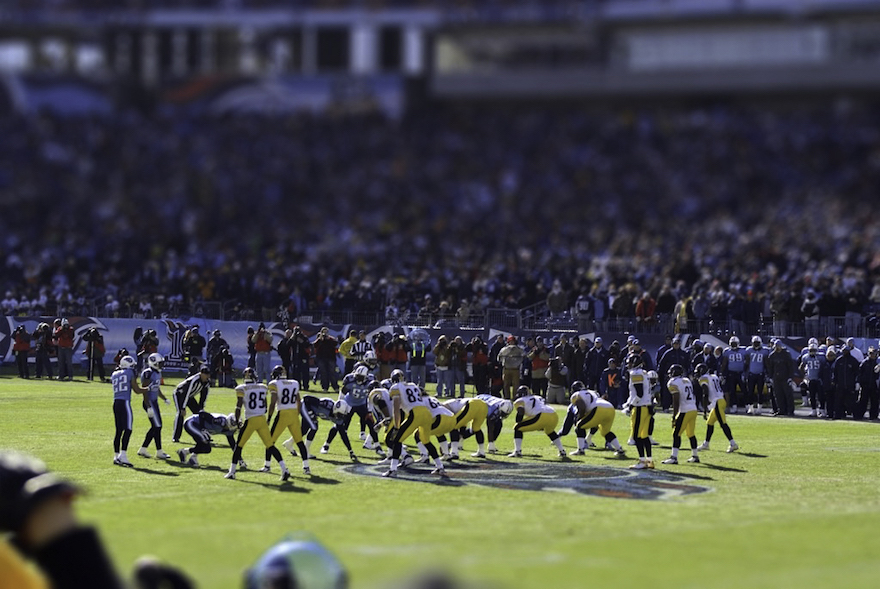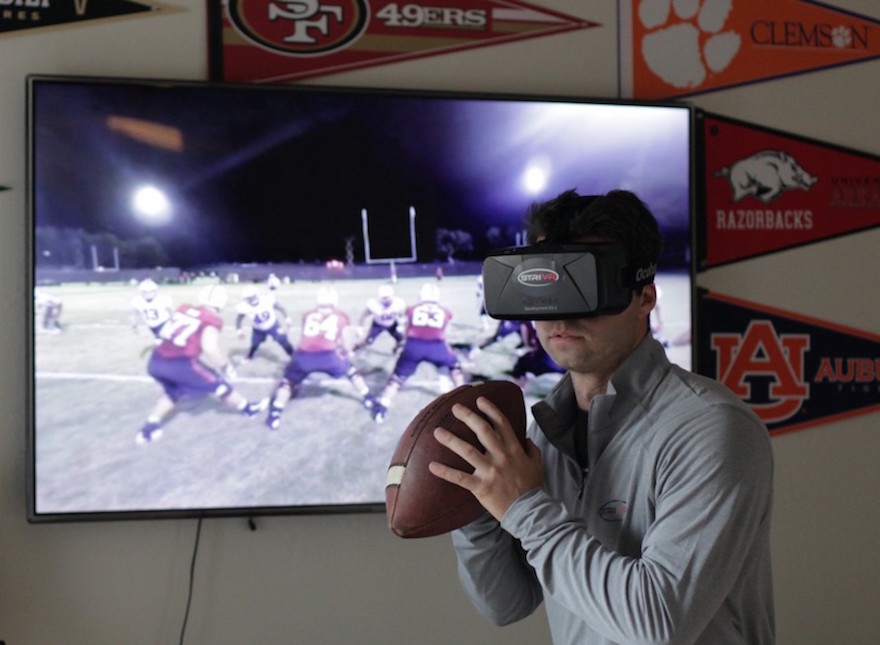This article is part of a collaboration with iQ by Intel.
A former NFL kicker is using cutting-edge virtual reality videos to help players and coaches train better, faster, and smarter.
Last year proved to be a banner year for athletics-related technological advances. A slew of smart helmets and wearable devices are now helping athletes, and better player tracking and camera angles are bringing sports fans amazing perspectives on favorite players. While all kinds of sports benefited from many new technologies in 2015, Sports Illustrated named virtual reality the innovation of the year. Looking ahead, 2016 could see virtual reality technology become widely adopted across mainstream sports. Professional football players are already testing it out through new training programs like the one by STRIVR.
A startup was founded in January 2015 by former Stanford University kicker and coach Derek Belch, STRIVR is poised to bring virtual reality videos into football training camps across the country. More accurately, Belch is bringing football training camps into the world of 360-degree videos. “When the player uses the training system, he is in an empty room with enough room to move around a little bit if he wants to simulate his footwork while watching a play,” Belch said. “In VR, the player is able to see the play from the view he actually has on the field and feels completely immersed in the environment.”

Tiny Steelers? by Andy McLemore
A handful of NFL teams and more than a dozen college programs are using STRIVR. With the help of a 360-degree camera, football drills are captured then stitched together so players and coaches can later watch each drill wearing virtual reality headsets. This gives them a 360-degree perspective on every play and every player.
The idea for STRIVR was born from a belief that there had to be a more effective way to study gameplay film than the traditional sideline and end-zone views. “Most teams will tether the [VR output] view to a television or projector so that the coach, or other players in the room, can see exactly what the player is looking at,” Belch said. “In this way, they can quite literally ‘coach’ the player while he is in VR.”
The example Belch uses involves a quarterback in search of his safety. If he looks for the right safety when he should be tracking down the left one, the coach will be there to correct him. “This is a very significant use-case for VR versus traditional film,” Belch said. Companies like EON Sports VR also bring virtual reality to athletic training using interactive videogame-like play, but Belch’s STRIVR actually films practice in 360-degree, immersive video, allowing players to ‘re-live’ each practice film from inside a virtual reality headset. Players can then study the practice from the same vantage point from which they played.
There is another benefit to using 360-degree video, according to Kim Pallister, director of virtual reality strategy at Intel: accessibility. “The thing you can do with video that you can’t do with the more [interactive] VR stuff is get it to a lot of people,” said Pallister. “360-degree video is already supported on YouTube and Facebook. Plus with Google Cardboard and GearVR shipping, there’s a lot of solutions out there.”
STRIVR uses the higher-end Oculus Rift headset for increased fidelity, but at a basic level, the company is working in a format that a mass audience can experience and understand. That mass audience can come into play when college football programs are recruiting. STRIVR shoots 360-degree videos in meeting rooms and huddles for schools including Arkansas University. These videos are designed to offer perspective players a taste of what it’s like to be part of the team.

Pallister said this implementation of VR is “more of a kitschy sort of experience,” but has a place in the competitive collegiate sports environment. “There’s money on the line,” Pallister explained. ”Teams often have a relatively high budget tolerance for things they believe will help them win games. They’ll look at any new technology and figure out what makes sense.” And with three STRIVR-using teams (Stanford, Clemson and Dartmouth) winning conference championships this year, Belch sees great momentum growing behind his technology.
While STRIVR and other virtual reality startups aren’t interested in entirely replacing real-world experiences or on-field practice, the technology is showing great promise beyond daily drills. It’s bringing current and future players, coaches and fans deeper into the game of football.
